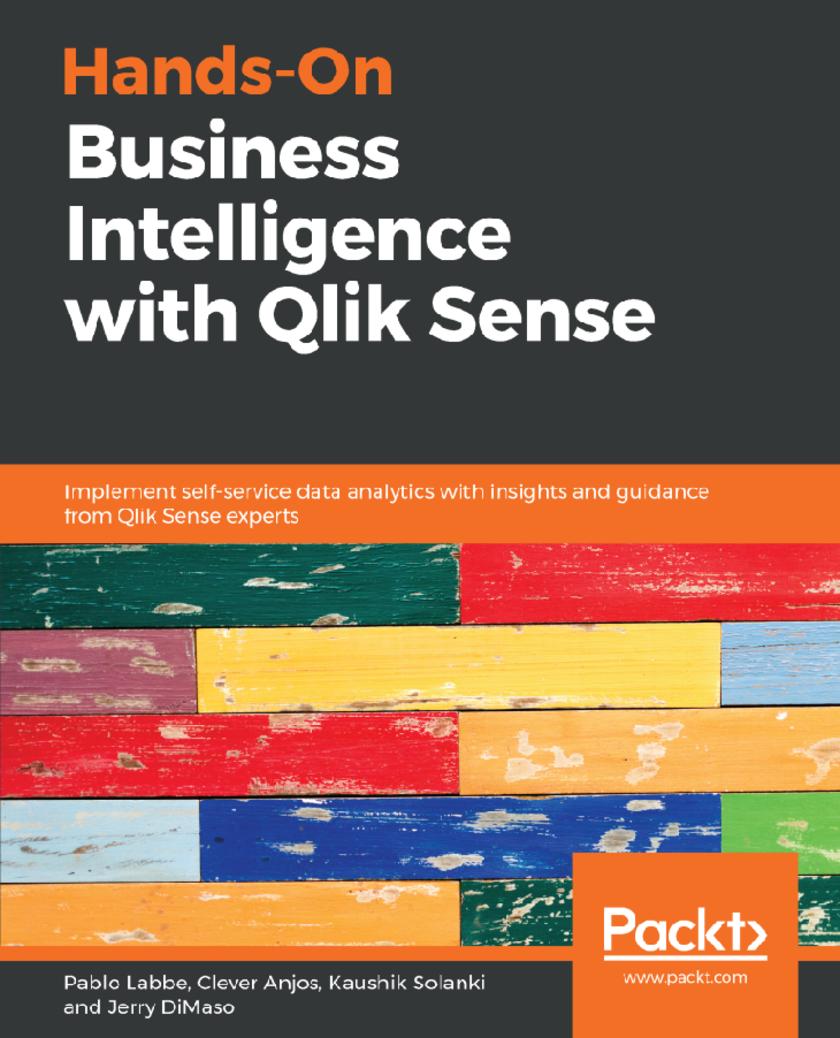
Hands-On Business Intelligence with Qlik Sense
¥73.02
Create dynamic dashboards to bring interactive data visualization to your enterprise using Qlik Sense Key Features * Implement various Qlik Sense features to create interactive dashboards * Analyze data easily and make business decisions faster using Qlik Sense * Perform self-service data analytics and geospatial analytics using an example-based approach Book Description Qlik Sense allows you to explore simple-to-complex data to reveal hidden insights and data relationships to make business-driven decisions. Hands-On Business Intelligence with Qlik Sense begins by helping you get to grips with underlying Qlik concepts and gives you an overview of all Qlik Sense’s features. You will learn advanced modeling techniques and learn how to analyze the data loaded using a variety of visualization objects. You’ll also be trained on how to share apps through Qlik Sense Enterprise and Qlik Sense Cloud and how to perform aggregation with AGGR. As you progress through the chapters, you’ll explore the stories feature to create data-driven presentations and update an existing story. This book will guide you through the GeoAnalytics feature with the geo-mapping object and GeoAnalytics connector. Furthermore, you’ll learn about the self-service analytics features and perform data forecasting using advanced analytics. Lastly, you’ll deploy Qlik Sense apps for mobile and tablet. By the end of this book, you will be well-equipped to run successful business intelligence applications using Qlik Sense's functionality, data modeling techniques, and visualization best practices. What you will learn * Discover how to load, reshape, and model data for analysis * Apply data visualization practices to create stunning dashboards * Make use of Python and R for advanced analytics * Perform geo-analysis to create visualizations using native objects * Learn how to work with AGGR and data stories Who this book is for If you’re a data analyst, BI developer, or interested in business intelligence and want to gain practical experience of working on Qlik Sense, this book is for you. You’ll also find it useful if you want to explore Qlik Sense’s next-generation applications for self-service business intelligence. No prior experience of working with Qlik Sense is required.
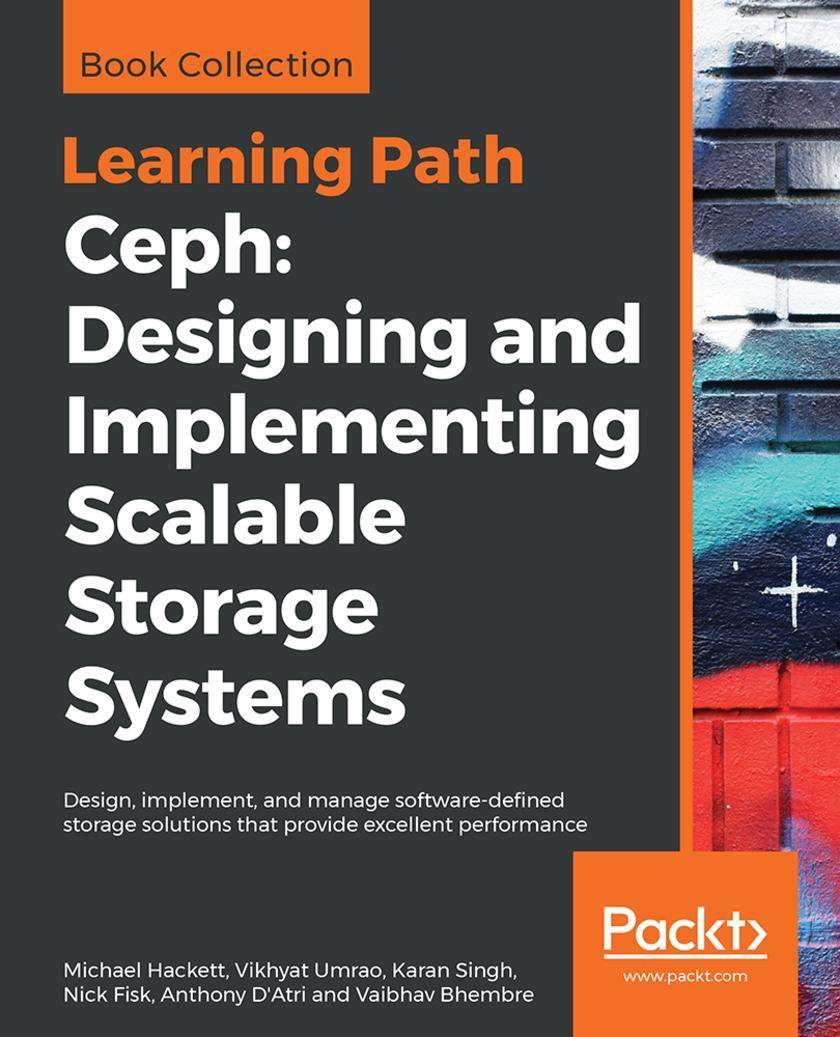
Ceph: Designing and Implementing Scalable Storage Systems
¥90.46
Get to grips with the unified, highly scalable distributed storage system and learn how to design and implement it. Key Features * Explore Ceph's architecture in detail * Implement a Ceph cluster successfully and gain deep insights into its best practices * Leverage the advanced features of Ceph, including erasure coding, tiering, and BlueStore Book Description This Learning Path takes you through the basics of Ceph all the way to gaining in-depth understanding of its advanced features. You’ll gather skills to plan, deploy, and manage your Ceph cluster. After an introduction to the Ceph architecture and its core projects, you’ll be able to set up a Ceph cluster and learn how to monitor its health, improve its performance, and troubleshoot any issues. By following the step-by-step approach of this Learning Path, you’ll learn how Ceph integrates with OpenStack, Glance, Manila, Swift, and Cinder. With knowledge of federated architecture and CephFS, you’ll use Calamari and VSM to monitor the Ceph environment. In the upcoming chapters, you’ll study the key areas of Ceph, including BlueStore, erasure coding, and cache tiering. More specifically, you’ll discover what they can do for your storage system. In the concluding chapters, you will develop applications that use Librados and distributed computations with shared object classes, and see how Ceph and its supporting infrastructure can be optimized. By the end of this Learning Path, you'll have the practical knowledge of operating Ceph in a production environment. This Learning Path includes content from the following Packt products: * Ceph Cookbook by Michael Hackett, Vikhyat Umrao and Karan Singh * Mastering Ceph by Nick Fisk * Learning Ceph, Second Edition by Anthony D'Atri, Vaibhav Bhembre and Karan Singh What you will learn * Understand the benefits of using Ceph as a storage solution * Combine Ceph with OpenStack, Cinder, Glance, and Nova components * Set up a test cluster with Ansible and virtual machine with VirtualBox * Develop solutions with Librados and shared object classes * Configure BlueStore and see its interaction with other configurations * Tune, monitor, and recover storage systems effectively * Build an erasure-coded pool by selecting intelligent parameters Who this book is for If you are a developer, system administrator, storage professional, or cloud engineer who wants to understand how to deploy a Ceph cluster, this Learning Path is ideal for you. It will help you discover ways in which Ceph features can solve your data storage problems. Basic knowledge of storage systems and GNU/Linux will be beneficial.
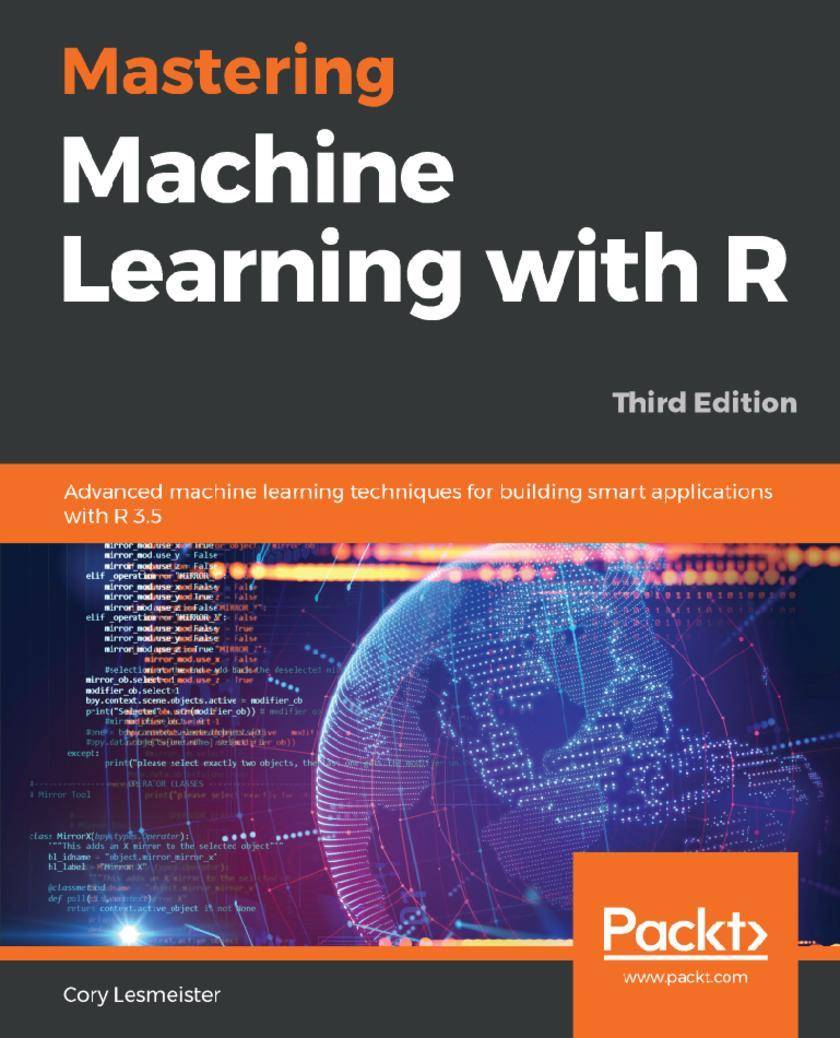
Mastering Machine Learning with R
¥73.02
Stay updated with expert techniques for solving data analytics and machine learning challenges and gain insights from complex projects and power up your applications Key Features * Build independent machine learning (ML) systems leveraging the best features of R 3.5 * Understand and apply different machine learning techniques using real-world examples * Use methods such as multi-class classification, regression, and clustering Book Description Given the growing popularity of the R-zerocost statistical programming environment, there has never been a better time to start applying ML to your data. This book will teach you advanced techniques in ML ,using? the latest code in R 3.5. You will delve into various complex features of supervised learning, unsupervised learning, and reinforcement learning algorithms to design efficient and powerful ML models. This newly updated edition is packed with fresh examples covering a range of tasks from different domains. Mastering Machine Learning with R starts by showing you how to quickly manipulate data and prepare it for analysis. You will explore simple and complex models and understand how to compare them. You’ll also learn to use the latest library support, such as TensorFlow and Keras-R, for performing advanced computations. Additionally, you’ll explore complex topics, such as natural language processing (NLP), time series analysis, and clustering, which will further refine your skills in developing applications. Each chapter will help you implement advanced ML algorithms using real-world examples. You’ll even be introduced to reinforcement learning, along with its various use cases and models. In the concluding chapters, you’ll get a glimpse into how some of these blackbox models can be diagnosed and understood. By the end of this book, you’ll be equipped with the skills to deploy ML techniques in your own projects or at work. What you will learn * Prepare data for machine learning methods with ease * Understand how to write production-ready code and package it for use * Produce simple and effective data visualizations for improved insights * Master advanced methods, such as Boosted Trees and deep neural networks * Use natural language processing to extract insights in relation to text * Implement tree-based classifiers, including Random Forest and Boosted Tree Who this book is for This book is for data science professionals, machine learning engineers, or anyone who is looking for the ideal guide to help them implement advanced machine learning algorithms. The book will help you take your skills to the next level and advance further in this field. Working knowledge of machine learning with R is mandatory.

Hands-On Full-Stack Web Development with GraphQL and React
¥81.74
Unearth the power of GraphQL, React, Apollo, Node, and Express to build a scalable, production ready application Key Features * Build full stack applications with modern APIs using GraphQL and Apollo * Integrate Apollo into React and build frontend components using GraphQL * Implement a self-updating notification pop-up with a unique GraphQL feature called Subscriptions Book Description React, one of the most widely used JavaScript frameworks, allows developers to build fast and scalable front end applications for any use case. GraphQL is the modern way of querying an API. It represents an alternative to REST and is the next evolution in web development. Combining these two revolutionary technologies will give you a future-proof and scalable stack you can start building your business around. This book will guide you in implementing applications by using React, Apollo, Node.js and SQL. We'll focus on solving complex problems with GraphQL, such as abstracting multi-table database architectures and handling image uploads. Our client, and server will be powered by Apollo. Finally we will go ahead and build a complete Graphbook. While building the app, we'll cover the tricky parts of connecting React to the back end, and maintaining and synchronizing state. We'll learn all about querying data and authenticating users. We'll write test cases to verify the front end and back end functionality for our application and cover deployment. By the end of the book, you will be proficient in using GraphQL and React for your full-stack development requirements. What you will learn * Resolve data from multi-table database and system architectures * Build a GraphQL API by implementing models and schemas with Apollo and Sequelize * Set up an Apollo Client and build front end components using React * Use Mocha to test your full-stack application * Write complex React components and share data across them * Deploy your application using Docker Who this book is for The book is for web developers who want to enhance their skills and build complete full stack applications using industry standards. Familiarity with JavaScript, React, and GraphQL is expected to get the most from this book.
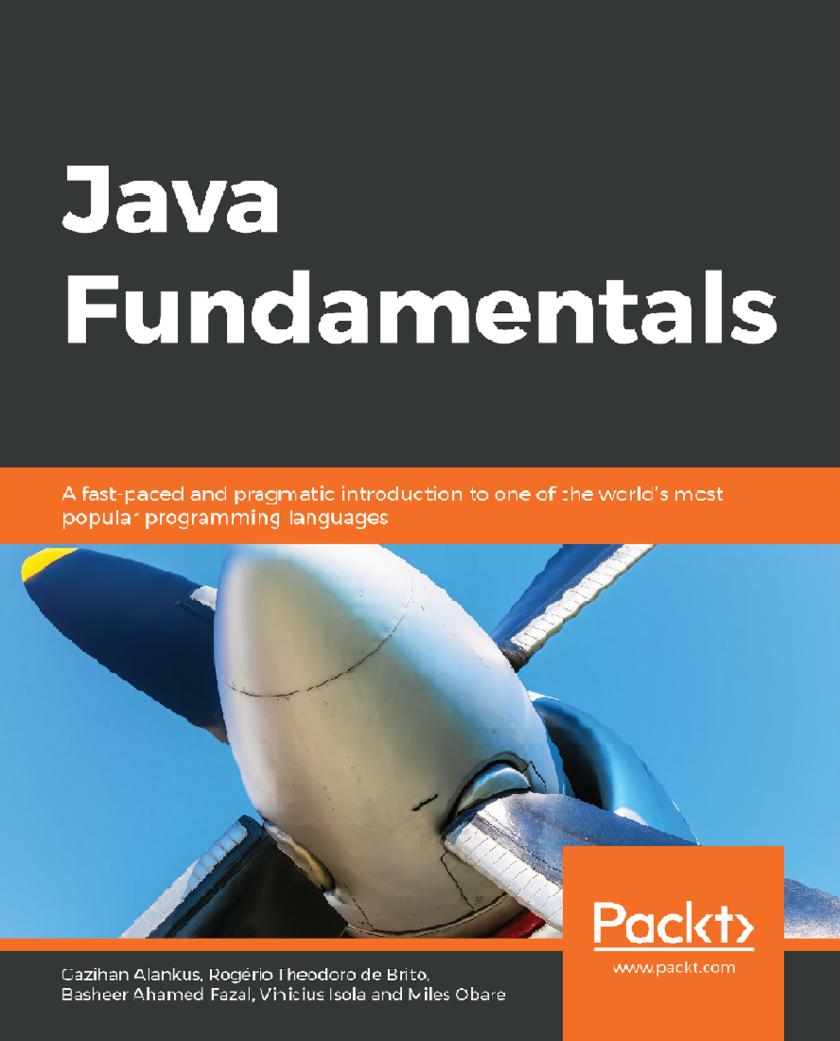
Java Fundamentals
¥54.49
Enhance your career options with this well-crafted object-oriented programming language that enjoys the support of an enormous ecosystem of tools and libraries Key Features * Get introduced to Java, its features, and its ecosystem * Understand how Java uses object-oriented programming * Become an expert Java exception handler Book Description Since its inception, Java has stormed the programming world. Its features and functionalities provide developers with the tools needed to write robust cross-platform applications. Java Fundamentals introduces you to these tools and functionalities that will enable you to create Java programs. The book begins with an introduction to the language, its philosophy, and evolution over time, until the latest release. You'll learn how the javac/java tools work and what Java packages are - the way a Java program is usually organized. Once you are comfortable with this, you'll be introduced to advanced concepts of the language, such as control flow keywords. You'll explore object-oriented programming and the part it plays in making Java what it is. In the concluding chapters, you'll get to grips with classes, typecasting, and interfaces, and understand the use of data structures, arrays, strings, handling exceptions, and creating generics. By the end of this book, you will have learned to write programs, automate tasks, and follow advanced courses on algorithms and data structures or explore more advanced Java courses. What you will learn * Create and run Java programs * Use data types, data structures, and control flow in your code * Implement best practices while creating objects * Work with constructors and inheritance * Understand advanced data structures to organize and store data * Employ generics for stronger check-types during compilation * Learn to handle exceptions in your code Who this book is for Java Fundamentals is designed for tech enthusiasts who are familiar with some programming languages and want a quick introduction to the most important principles of Java.
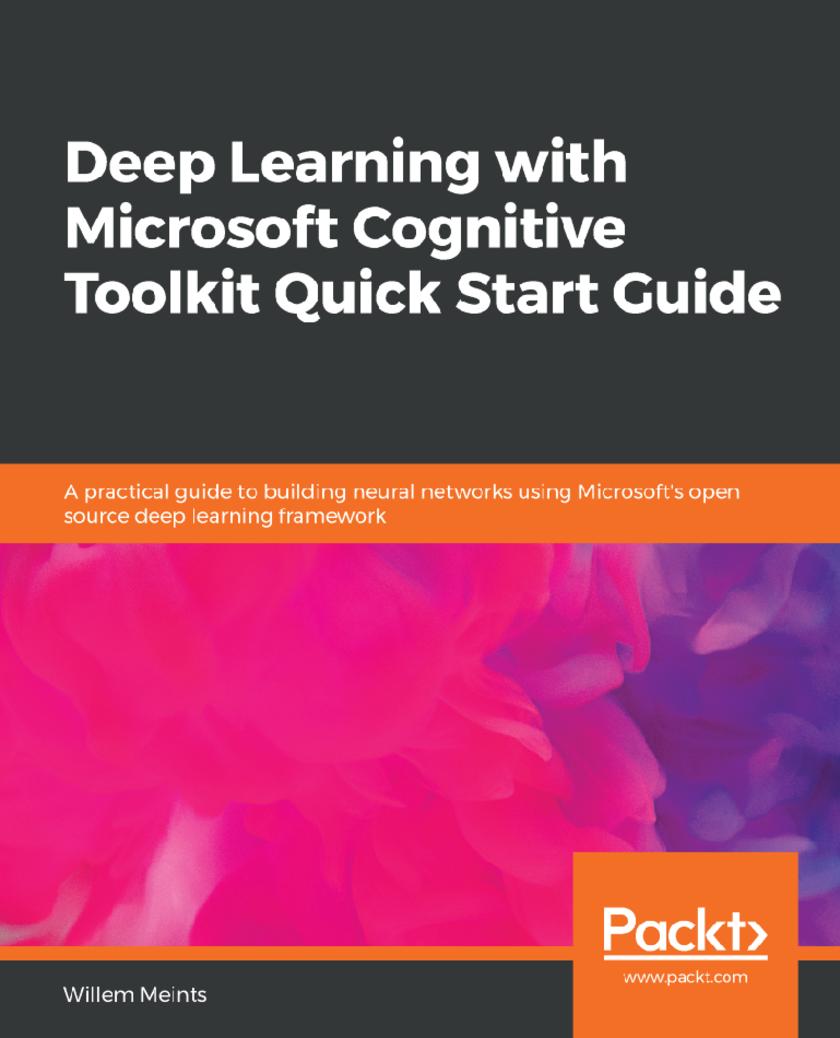
Deep Learning with Microsoft Cognitive Toolkit Quick Start Guide
¥54.49
Learn how to train popular deep learning architectures such as autoencoders, convolutional and recurrent neural networks while discovering how you can use deep learning models in your software applications with Microsoft Cognitive Toolkit Key Features * Understand the fundamentals of Microsoft Cognitive Toolkit and set up the development environment * Train different types of neural networks using Cognitive Toolkit and deploy it to production * Evaluate the performance of your models and improve your deep learning skills Book Description Cognitive Toolkit is a very popular and recently open sourced deep learning toolkit by Microsoft. Cognitive Toolkit is used to train fast and effective deep learning models. This book will be a quick introduction to using Cognitive Toolkit and will teach you how to train and validate different types of neural networks, such as convolutional and recurrent neural networks. This book will help you understand the basics of deep learning. You will learn how to use Microsoft Cognitive Toolkit to build deep learning models and discover what makes this framework unique so that you know when to use it. This book will be a quick, no-nonsense introduction to the library and will teach you how to train different types of neural networks, such as convolutional neural networks, recurrent neural networks, autoencoders, and more, using Cognitive Toolkit. Then we will look at two scenarios in which deep learning can be used to enhance human capabilities. The book will also demonstrate how to evaluate your models' performance to ensure it trains and runs smoothly and gives you the most accurate results. Finally, you will get a short overview of how Cognitive Toolkit fits in to a DevOps environment What you will learn * Set up your deep learning environment for the Cognitive Toolkit on Windows and Linux * Pre-process and feed your data into neural networks * Use neural networks to make effcient predictions and recommendations * Train and deploy effcient neural networks such as CNN and RNN * Detect problems in your neural network using TensorBoard * Integrate Cognitive Toolkit with Azure ML Services for effective deep learning Who this book is for Data Scientists, Machine learning developers, AI developers who wish to train and deploy effective deep learning models using Microsoft CNTK will find this book to be useful. Readers need to have experience in Python or similar object-oriented language like C# or Java.
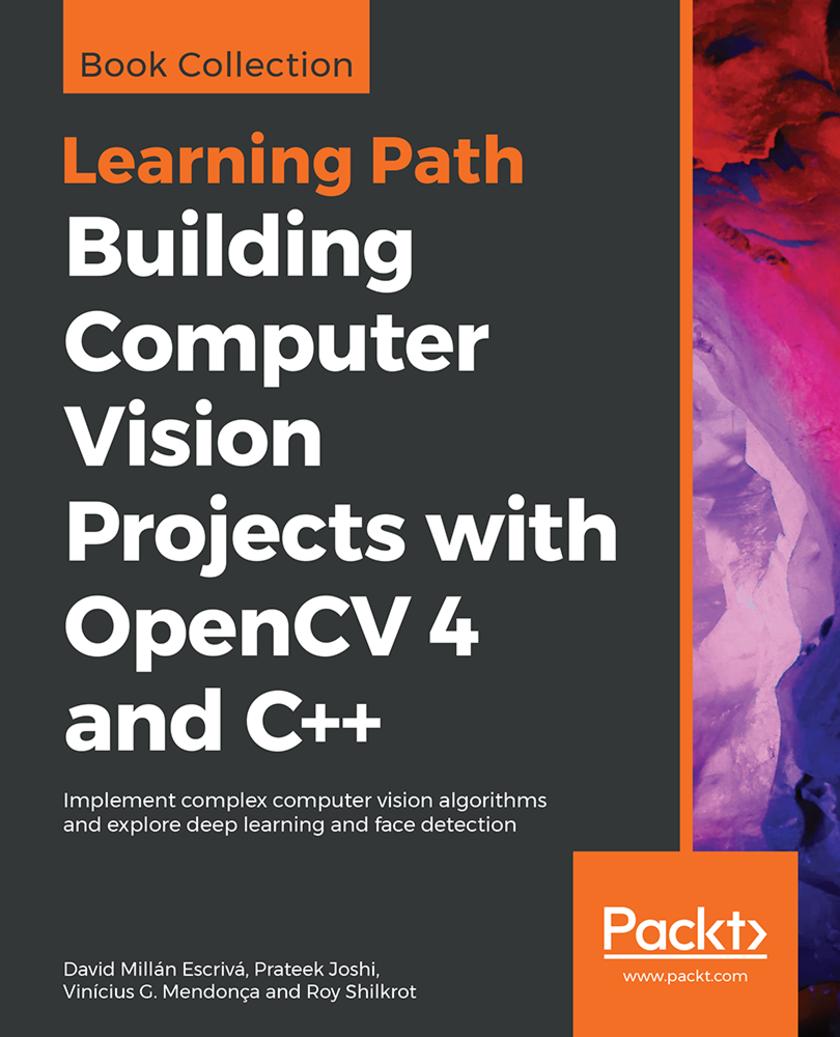
Building Computer Vision Projects with OpenCV 4 and C++
¥90.46
Delve into practical computer vision and image processing projects and get up to speed with advanced object detection techniques and machine learning algorithms Key Features * Discover best practices for engineering and maintaining OpenCV projects * Explore important deep learning tools for image classification * Understand basic image matrix formats and filters Book Description OpenCV is one of the best open source libraries available and can help you focus on constructing complete projects on image processing, motion detection, and image segmentation. This Learning Path is your guide to understanding OpenCV concepts and algorithms through real-world examples and activities. Through various projects, you'll also discover how to use complex computer vision and machine learning algorithms and face detection to extract the maximum amount of information from images and videos. In later chapters, you'll learn to enhance your videos and images with optical flow analysis and background subtraction. Sections in the Learning Path will help you get to grips with text segmentation and recognition, in addition to guiding you through the basics of the new and improved deep learning modules. By the end of this Learning Path, you will have mastered commonly used computer vision techniques to build OpenCV projects from scratch. This Learning Path includes content from the following Packt books: * Mastering OpenCV 4 - Third Edition by Roy Shilkrot and David Millán Escrivá * Learn OpenCV 4 By Building Projects - Second Edition by David Millán Escrivá, Vinícius G. Mendon?a, and Prateek Joshi What you will learn * Stay up-to-date with algorithmic design approaches for complex computer vision tasks * Work with OpenCV's most up-to-date API through various projects * Understand 3D scene reconstruction and Structure from Motion (SfM) * Study camera calibration and overlay augmented reality (AR) using the ArUco module * Create CMake scripts to compile your C++ application * Explore segmentation and feature extraction techniques * Remove backgrounds from static scenes to identify moving objects for surveillance * Work with new OpenCV functions to detect and recognize text with Tesseract Who this book is for If you are a software developer with a basic understanding of computer vision and image processing and want to develop interesting computer vision applications with OpenCV, this Learning Path is for you. Prior knowledge of C++ and familiarity with mathematical concepts will help you better understand the concepts in this Learning Path.
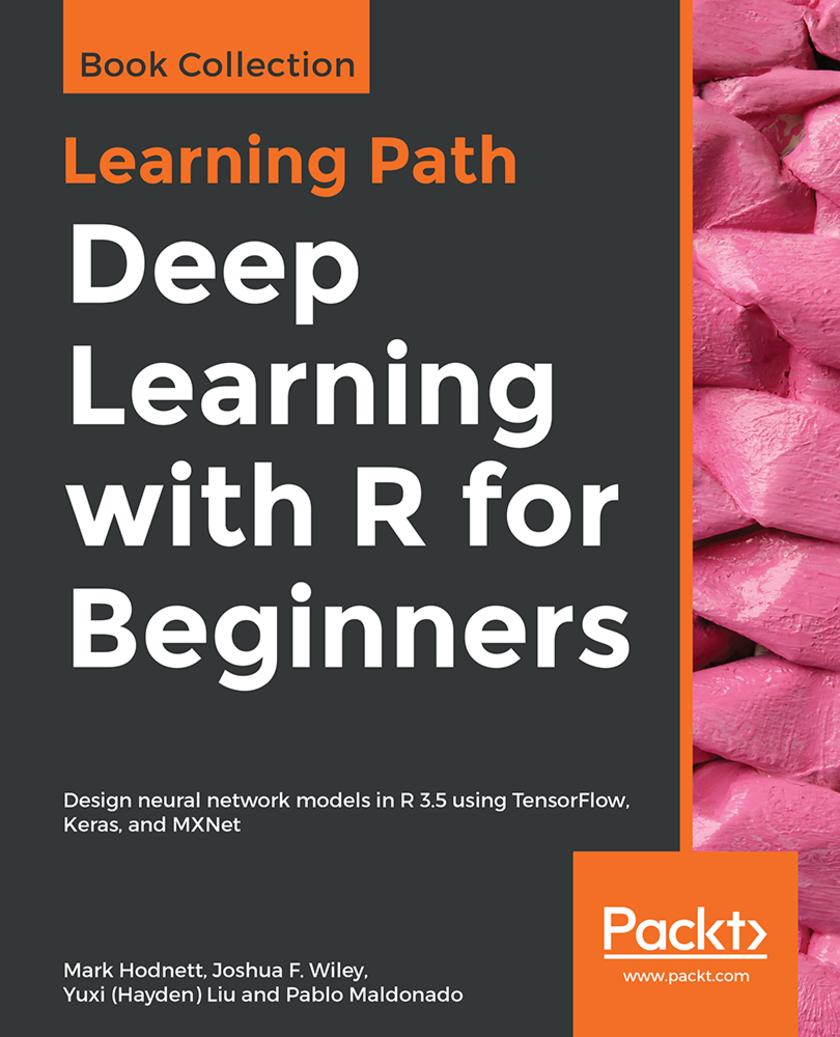
Deep Learning with R for Beginners
¥88.28
Explore the world of neural networks by building powerful deep learning models using the R ecosystem Key Features * Get to grips with the fundamentals of deep learning and neural networks * Use R 3.5 and its libraries and APIs to build deep learning models for computer vision and text processing * Implement effective deep learning systems in R with the help of end-to-end projects Book Description Deep learning finds practical applications in several domains, while R is the preferred language for designing and deploying deep learning models. This Learning Path introduces you to the basics of deep learning and even teaches you to build a neural network model from scratch. As you make your way through the chapters, you’ll explore deep learning libraries and understand how to create deep learning models for a variety of challenges, right from anomaly detection to recommendation systems. The book will then help you cover advanced topics, such as generative adversarial networks (GANs), transfer learning, and large-scale deep learning in the cloud, in addition to model optimization, overfitting, and data augmentation. Through real-world projects, you’ll also get up to speed with training convolutional neural networks (CNNs), recurrent neural networks (RNNs), and long short-term memory networks (LSTMs) in R. By the end of this Learning Path, you’ll be well versed with deep learning and have the skills you need to implement a number of deep learning concepts in your research work or projects. This Learning Path includes content from the following Packt products: * R Deep Learning Essentials - Second Edition by F. Wiley and Mark Hodnett * R Deep Learning Projects by Yuxi (Hayden) Liu and Pablo Maldonado What you will learn * Implement credit card fraud detection with autoencoders * Train neural networks to perform handwritten digit recognition using MXNet * Reconstruct images using variational autoencoders * Explore the applications of autoencoder neural networks in clustering and dimensionality reduction * Create natural language processing (NLP) models using Keras and TensorFlow in R * Prevent models from overfitting the data to improve generalizability * Build shallow neural network prediction models Who this book is for This Learning Path is for aspiring data scientists, data analysts, machine learning developers, and deep learning enthusiasts who are well versed in machine learning concepts and are looking to explore the deep learning paradigm using R. A fundamental understanding of R programming and familiarity with the basic concepts of deep learning are necessary to get the most out of this Learning Path.
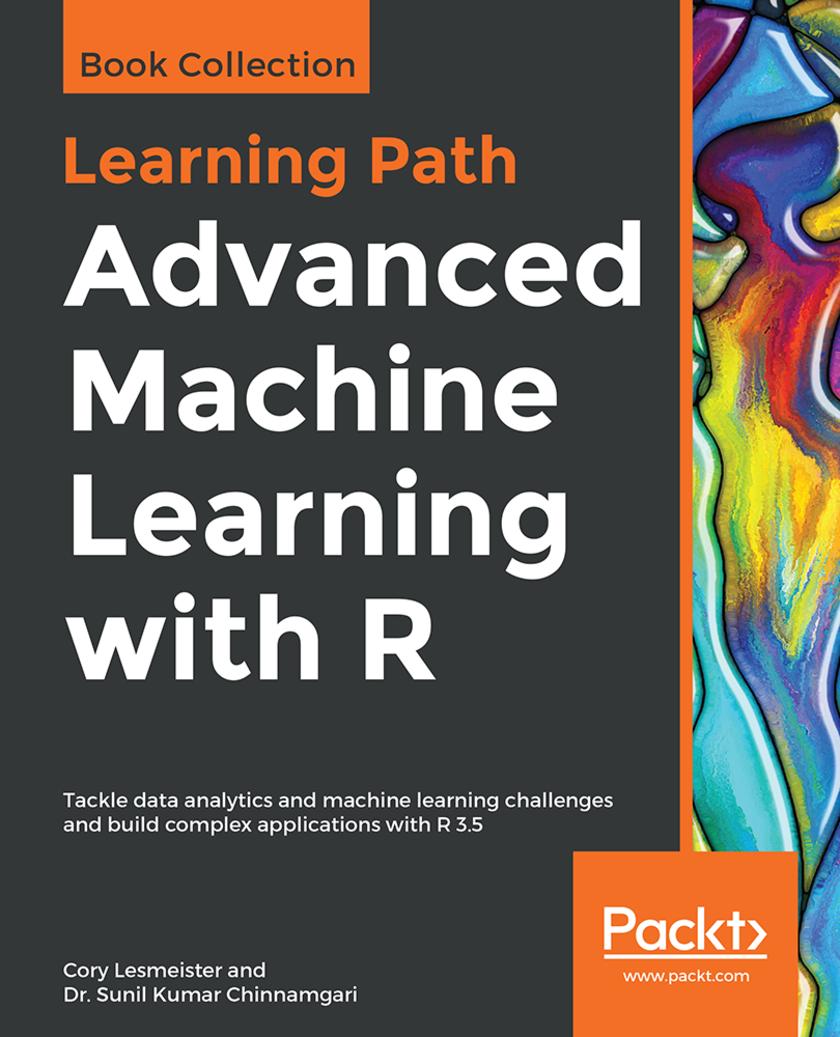
Advanced Machine Learning with R
¥88.28
Master machine learning techniques with real-world projects that interface TensorFlow with R, H2O, MXNet, and other languages Key Features * Gain expertise in machine learning, deep learning and other techniques * Build intelligent end-to-end projects for finance, social media, and a variety of domains * Implement multi-class classification, regression, and clustering Book Description R is one of the most popular languages when it comes to exploring the mathematical side of machine learning and easily performing computational statistics. This Learning Path shows you how to leverage the R ecosystem to build efficient machine learning applications that carry out intelligent tasks within your organization. You'll tackle realistic projects such as building powerful machine learning models with ensembles to predict employee attrition. You'll explore different clustering techniques to segment customers using wholesale data and use TensorFlow and Keras-R for performing advanced computations. You’ll also be introduced to reinforcement learning along with its various use cases and models. Additionally, it shows you how some of these black-box models can be diagnosed and understood. By the end of this Learning Path, you’ll be equipped with the skills you need to deploy machine learning techniques in your own projects. This Learning Path includes content from the following Packt products: * R Machine Learning Projects by Dr. Sunil Kumar Chinnamgari * Mastering Machine Learning with R - Third Edition by Cory Lesmeister What you will learn * Develop a joke recommendation engine to recommend jokes that match users’ tastes * Build autoencoders for credit card fraud detection * Work with image recognition and convolutional neural networks * Make predictions for casino slot machine using reinforcement learning * Implement NLP techniques for sentiment analysis and customer segmentation * Produce simple and effective data visualizations for improved insights * Use NLP to extract insights for text * Implement tree-based classifiers including random forest and boosted tree Who this book is for If you are a data analyst, data scientist, or machine learning developer this is an ideal Learning Path for you. Each project will help you test your skills in implementing machine learning algorithms and techniques. A basic understanding of machine learning and working knowledge of R programming is necessary to get the most out of this Learning Path.
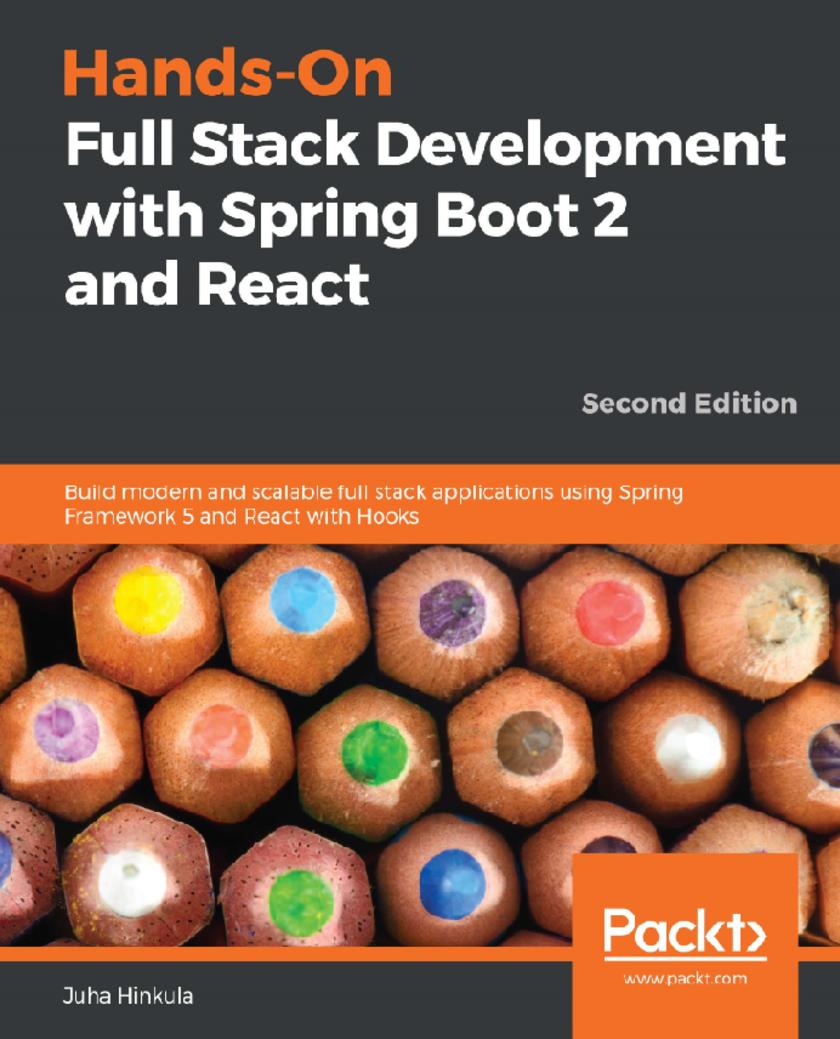
Hands-On Full Stack Development with Spring Boot 2 and React
¥62.12
A comprehensive guide to building full stack applications covering frontend and server-side programming, data management, and web security Key Features * Unleash the power of React Hooks to build interactive and complex user interfaces * Build scalable full stack applications designed to meet demands of modern users * Understand how the Axios library simplifies CRUD operations Book Description React Hooks have changed the way React components are coded. They enable you to write components in a more intuitive way without using classes, which makes your code easier to read and maintain. Building on from the previous edition, this book is updated with React Hooks and the latest changes introduced in create-react-app and Spring Boot 2.1. This book starts with a brief introduction to Spring Boot. You’ll understand how to use dependency injection and work with the data access layer of Spring using Hibernate as the ORM tool. You’ll then learn how to build your own RESTful API endpoints for web applications. As you advance, the book introduces you to other Spring components, such as Spring Security to help you secure the backend. Moving on, you’ll explore React and its app development environment and components for building your frontend. Finally, you’ll create a Docker container for your application by implementing the best practices that underpin professional full stack web development. By the end of this book, you’ll be equipped with all the knowledge you need to build modern full stack applications with Spring Boot for the backend and React for the frontend. What you will learn * Create a RESTful web service with Spring Boot * Grasp the fundamentals of dependency injection and how to use it for backend development * Discover techniques for securing the backend using Spring Security * Understand how to use React for frontend programming * Benefit from the Heroku cloud server by deploying your application to it * Delve into the techniques for creating unit tests using JUnit * Explore the Material UI component library to make more user-friendly user interfaces Who this book is for If you are a Java developer familiar with Spring, but are new to building full stack applications, this is the book for you.
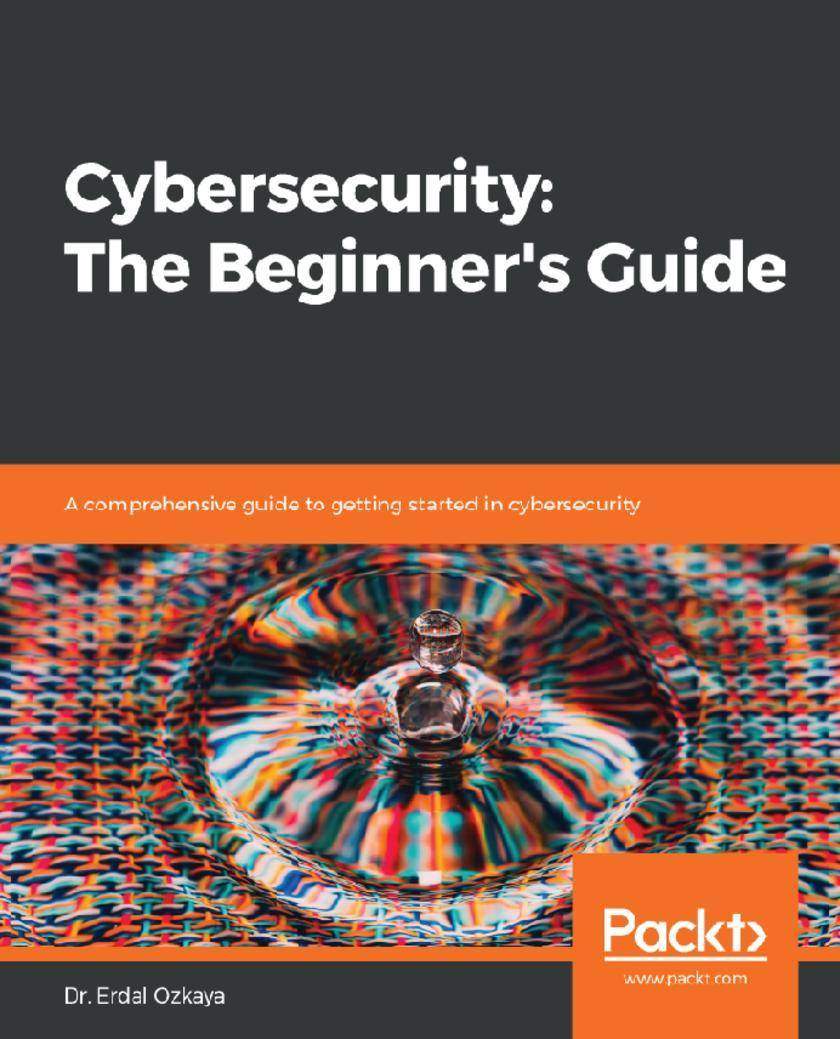
Cybersecurity: The Beginner's Guide
¥53.40
Understand the nitty-gritty of Cybersecurity with ease Key Features * Align your security knowledge with industry leading concepts and tools * Acquire required skills and certifications to survive the ever changing market needs * Learn from industry experts to analyse, implement, and maintain a robust environment Book Description It's not a secret that there is a huge talent gap in the cybersecurity industry. Everyone is talking about it including the prestigious Forbes Magazine, Tech Republic, CSO Online, DarkReading, and SC Magazine, among many others. Additionally, Fortune CEO's like Satya Nadella, McAfee's CEO Chris Young, Cisco's CIO Colin Seward along with organizations like ISSA, research firms like Gartner too shine light on it from time to time. This book put together all the possible information with regards to cybersecurity, why you should choose it, the need for cyber security and how can you be part of it and fill the cybersecurity talent gap bit by bit. Starting with the essential understanding of security and its needs, we will move to security domain changes and how artificial intelligence and machine learning are helping to secure systems. Later, this book will walk you through all the skills and tools that everyone who wants to work as security personal need to be aware of. Then, this book will teach readers how to think like an attacker and explore some advanced security methodologies. Lastly, this book will deep dive into how to build practice labs, explore real-world use cases and get acquainted with various cybersecurity certifications. By the end of this book, readers will be well-versed with the security domain and will be capable of making the right choices in the cybersecurity field. What you will learn * Get an overview of what cybersecurity is and learn about the various faces of cybersecurity as well as identify domain that suits you best * Plan your transition into cybersecurity in an efficient and effective way * Learn how to build upon your existing skills and experience in order to prepare for your career in cybersecurity Who this book is for This book is targeted to any IT professional who is looking to venture in to the world cyber attacks and threats. Anyone with some understanding or IT infrastructure workflow will benefit from this book. Cybersecurity experts interested in enhancing their skill set will also find this book useful.
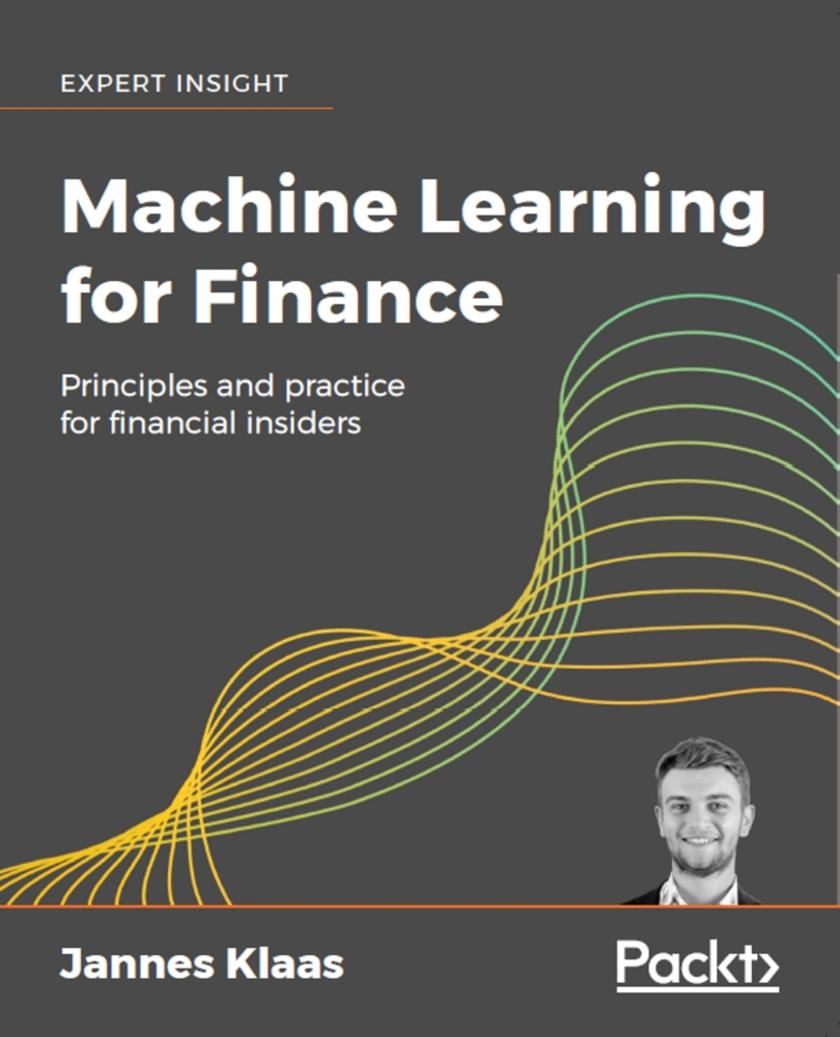
Machine Learning for Finance
¥70.84
Plan and build useful machine learning systems for financial services, with full working Python code Key Features * Build machine learning systems that will be useful across the financial services industry * Discover how machine learning can solve finance industry challenges * Gain the machine learning insights and skills fintech companies value most Book Description Machine learning skills are essential for anybody working in financial data analysis. Machine Learning for Finance shows you how to build machine learning models for use in financial services organizations. It shows you how to work with all the key machine learning models, from simple regression to advanced neural networks. You will see how to use machine learning to automate manual tasks, identify and address systemic bias, and find new insights and patterns hidden in available data. Machine Learning for Finance encourages and equips you to find new ways to use data to serve an organization’s business goals. Broad in scope yet deeply practical in approach, Machine Learning for Finance will help you to apply machine learning in all parts of a financial organization’s infrastructure. If you work or plan to work in fintech, and want to gain one of the most valuable skills in the sector today, this book is for you. What you will learn * Practical machine learning for the finance sector * Build machine learning systems that support the goals of financial organizations * Think creatively about problems and how machine learning can solve them * Identify and reduce sources of bias from machine learning models * Apply machine learning to structured data, natural language, photographs, and written text related to finance * Use machine learning to detect fraud, forecast financial trends, analyze customer sentiments, and more * Implement heuristic baselines, time series, generative models, and reinforcement learning in Python, scikit-learn, Keras, and TensorFlow Who this book is for Machine Learning for Finance is for financial professionals who want to develop and apply machine learning skills, and for students entering the field. You should be comfortable with Python and the basic data science stack, such as NumPy, pandas, and Matplotlib, to get the most out of this book.
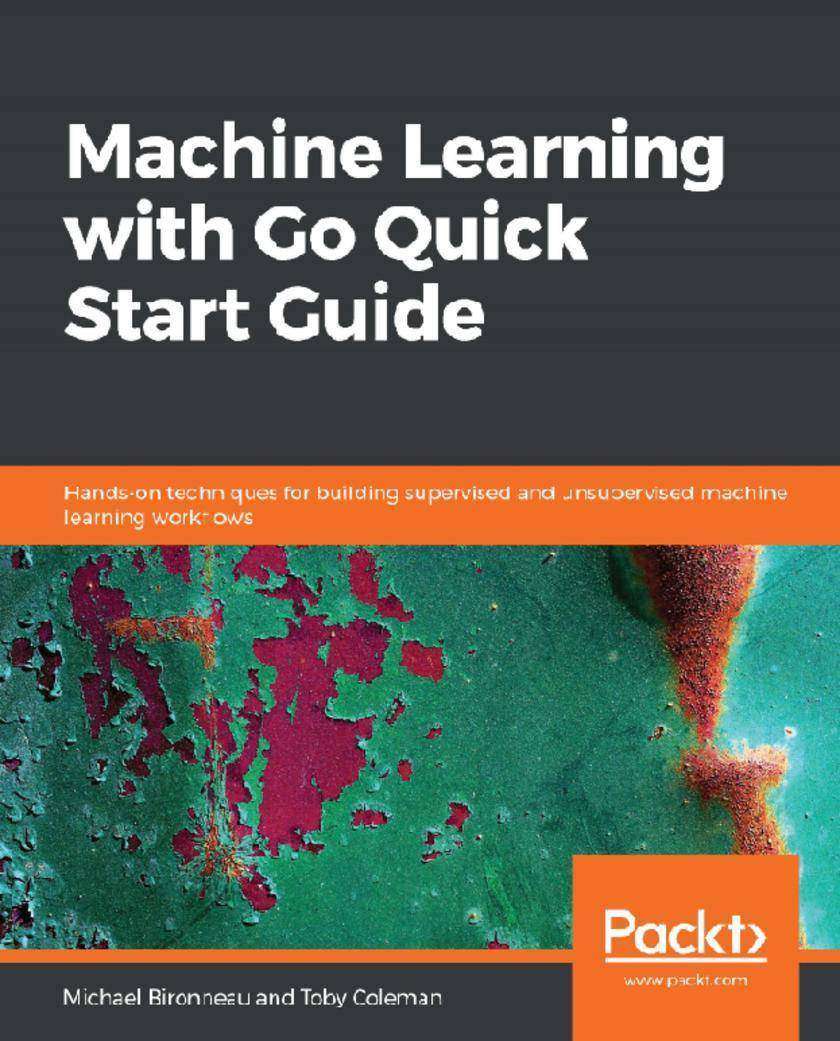
Machine Learning with Go Quick Start Guide
¥44.68
This quick start guide will bring the readers to a basic level of understanding when it comes to the Machine Learning (ML) development lifecycle, will introduce Go ML libraries and then will exemplify common ML methods such as Classification, Regression, and Clustering Key Features * Your handy guide to building machine learning workflows in Go for real-world scenarios * Build predictive models using the popular supervised and unsupervised machine learning techniques * Learn all about deployment strategies and take your ML application from prototype to production ready Book Description Machine learning is an essential part of today's data-driven world and is extensively used across industries, including financial forecasting, robotics, and web technology. This book will teach you how to efficiently develop machine learning applications in Go. The book starts with an introduction to machine learning and its development process, explaining the types of problems that it aims to solve and the solutions it offers. It then covers setting up a frictionless Go development environment, including running Go interactively with Jupyter notebooks. Finally, common data processing techniques are introduced. The book then teaches the reader about supervised and unsupervised learning techniques through worked examples that include the implementation of evaluation metrics. These worked examples make use of the prominent open-source libraries GoML and Gonum. The book also teaches readers how to load a pre-trained model and use it to make predictions. It then moves on to the operational side of running machine learning applications: deployment, Continuous Integration, and helpful advice for effective logging and monitoring. At the end of the book, readers will learn how to set up a machine learning project for success, formulating realistic success criteria and accurately translating business requirements into technical ones. What you will learn * Understand the types of problem that machine learning solves, and the various approaches * Import, pre-process, and explore data with Go to make it ready for machine learning algorithms * Visualize data with gonum/plot and Gophernotes * Diagnose common machine learning problems, such as overfitting and underfitting * Implement supervised and unsupervised learning algorithms using Go libraries * Build a simple web service around a model and use it to make predictions Who this book is for This book is for developers and data scientists with at least beginner-level knowledge of Go, and a vague idea of what types of problem Machine Learning aims to tackle. No advanced knowledge of Go (and no theoretical understanding of the math that underpins Machine Learning) is required.
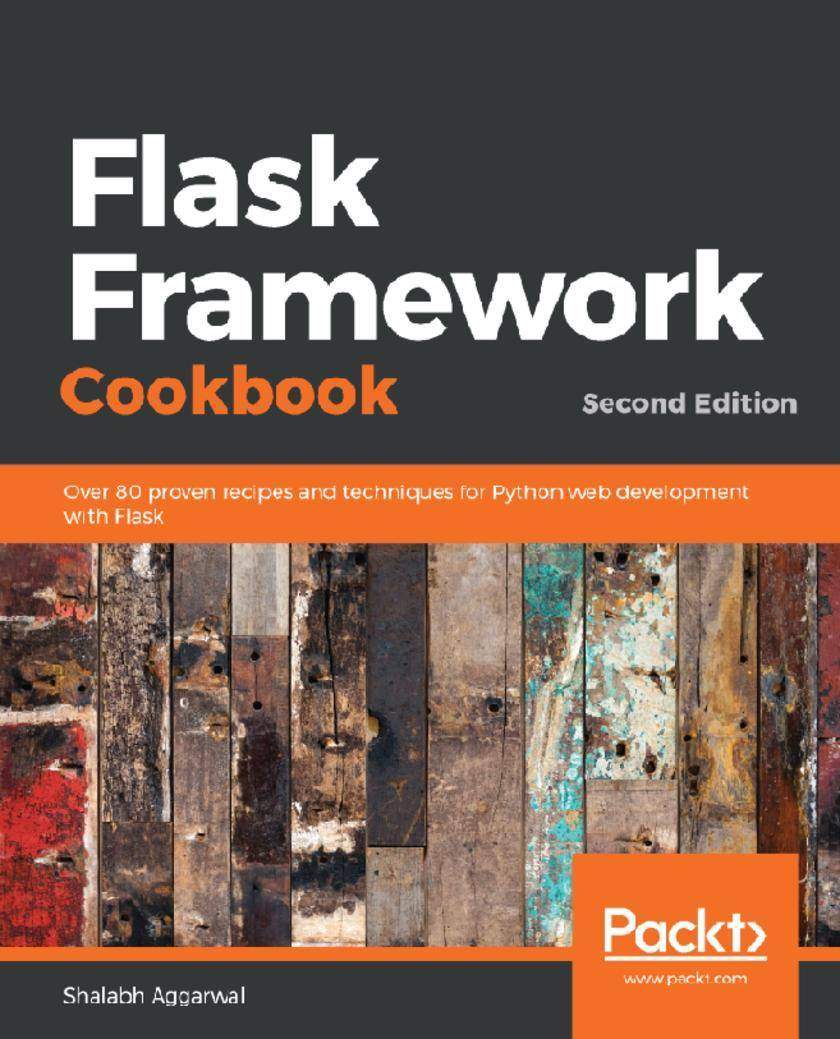
Flask Framework Cookbook
¥53.40
Build state-of-the-art web applications quickly and efficiently using Flask and related technologies with Python 3 Key Features * Updated to Flask 1.0.3 and Python 3.7 with coverage of Microservices * Get the most out of the powerful Flask framework and maintain the flexibility of your design choices * Write cleaner and maintainable code with the help of sample apps Book Description Flask, the lightweight Python web framework, is popular due to its powerful modular design that lets you build scalable web apps. With this recipe-based guide, you’ll explore modern solutions and best practices for Flask web development. Updated to the latest version of Flask and Python 3, this second edition of Flask Framework Cookbook moves away from some of the old and obsolete libraries and introduces recipes on bleeding edge technologies. You’ll discover different ways of using Flask to create, deploy, and manage microservices. This Flask Python book starts by covering the different configurations that a Flask application can make use of, and then helps you work with templates and learn about the ORM and view layers. You’ll also be able to write an admin interface and get to grips with debugging and logging errors. Finally, you’ll grasp a variety of deployment and post-deployment techniques for platforms such as Apache, Tornado, and Heroku. By the end of this book, you’ll have gained all the knowledge you need to write Flask applications in the best possible way and scale them using standard industry practices. What you will learn * Explore web application development in Flask, right from installation to post-deployment stages * Make use of advanced templating and data modeling techniques * Discover effective debugging, logging, and error handling techniques in Flask * Integrate Flask with different technologies such as Redis, Sentry, and MongoDB * Deploy and package Flask applications with Docker and Kubernetes * Design scalable microservice architecture using AWS LambdaContinuous integration and Continuous deployment Who this book is for If you are a web developer who wants to learn more about developing scalable and production-ready applications in Flask, this is the book for you. You’ll also find this book useful if you are already aware of Flask's major extensions and want to use them for better application development. Basic Python programming experience along with basic understanding of Flask is assumed.

Professional Azure SQL Database Administration
¥79.56
Leverage the features of Azure SQL database and become an expert in data management Key Features * Explore ways to create shards and elastic pools to scale Azure SQL databases * Automate common management tasks with PowerShell * Implement over 40 practical activities and exercises to reinforce your learning Book Description Despite being the cloud version of SQL Server, Azure SQL Database differs in key ways when it comes to management, maintenance, and administration. This book shows you how to administer Azure SQL database to fully benefit from its wide range of features and functionality. Professional Azure SQL Database Administration begins by covering the architecture and explaining the difference between Azure SQL Database and the on-premise SQL Server to help you get comfortable with Azure SQL database. You’ll perform common tasks such as migrating, backing up, and restoring a SQL Server database to an Azure database. As you progress, you’ll study how you can save costs and manage and scale multiple SQL Databases using elastic pools. You’ll also implement a disaster recovery solution using standard and active geo-replication. Whether it is learning different techniques to monitor and tune an Azure SQL database or improving performance using in-memory technology, this book will enable you to make the most out of Azure SQL database features and functionality for data management solutions. By the end of this book, you’ll be well versed with key aspects of an Azure SQL database instance, such as migration, backup restorations, performance optimization, high availability, and disaster recovery. What you will learn * Understand Azure SQL Database configuration and pricing options * Provision a new SQL database or migrate an existing on-premise SQL Server database to Azure SQL Database * Back up and restore Azure SQL Database * Secure an Azure SQL database * Scale an Azure SQL database * Monitor and tune an Azure SQL database * Implement high availability and disaster recovery with Azure SQL Database * Automate common management tasks with PowerShell * Develop a scalable cloud solution with Azure SQL Database * Manage, maintain, and secure managed instances Who this book is for If you’re a database administrator, database developer, or an application developer interested in developing new applications or migrating existing ones with Azure SQL database, this book is for you. Prior experience of working with an on-premise SQL Server or Azure SQL database along with a basic understanding of PowerShell scripts and C# code is necessary to grasp the concepts covered in this book.

Implementing Microsoft Dynamics 365 Business Central On-Premise
¥90.46
Implement Business Central and explore methods to upgrade to NAV 2018 Key Features *Learn the key roles of Dynamics NAV partner and the roles within your customer's organization *Create configuration packages and perform data migration *Explore Microsoft Dynamics 365 Business Central to use Dynamics NAV 2018 functionalities in the Cloud Book Description Microsoft Dynamics Business Central is a full business solution suite and a complete ERP solution, which contains a robust set of development tools; these tools can help you to gain control over your business and can simplify supply chains, manufacturing, and operations. Implementing Microsoft Dynamics 365 Business Central On-Premise covers the latest features of Dynamics Business Central and NAV from the end users' and developers' perspectives. It also provides an insight into different tools available for implementation, whether it's a new installation or migrating from the previous version of Dynamics NAV. This book will take you from an introduction to Dynamics NAV 2018 through to exploring all the techniques related to implementation and migration. You will also learn to expand functionalities within your existing Microsoft Dynamics NAV installation, perform data analysis, and implement free third-party add-ons to your existing installation. As you progress through the book, you will learn to work with third-party add-on tools. In the concluding chapters, you will explore Dynamics 365 Business Central, the new Cloud solution based on the Microsoft NAV platform, and techniques for using Docker and Sandbox to develop applications. By the end of the book, you will have gained a deep understanding of the key components for successful Dynamics NAV implementation for an organization. What you will learn *Explore new features introduced in Microsoft Dynamics NAV 2018 *Migrate to Microsoft Dynamics NAV 2018 from previous versions *Learn abstract techniques for data analysis, reporting, and debugging *Install, configure, and use additional tools for business intelligence, document management, and reporting *Discover Dynamics 365 Business Central and several other Microsoft services *Utilize different tools to develop applications for Business Central Who this book is for Implementing Microsoft Dynamics 365 Business Central On-Premise is for Dynamics NAV partners and end users who want to know everything about Dynamics NAV implementation. This book is for you if you want to be a project manager or get involved with Dynamics NAV, but do not have the expertise to write code yourself. This book can also help you to understand the need to move to Business Central and its advantages.
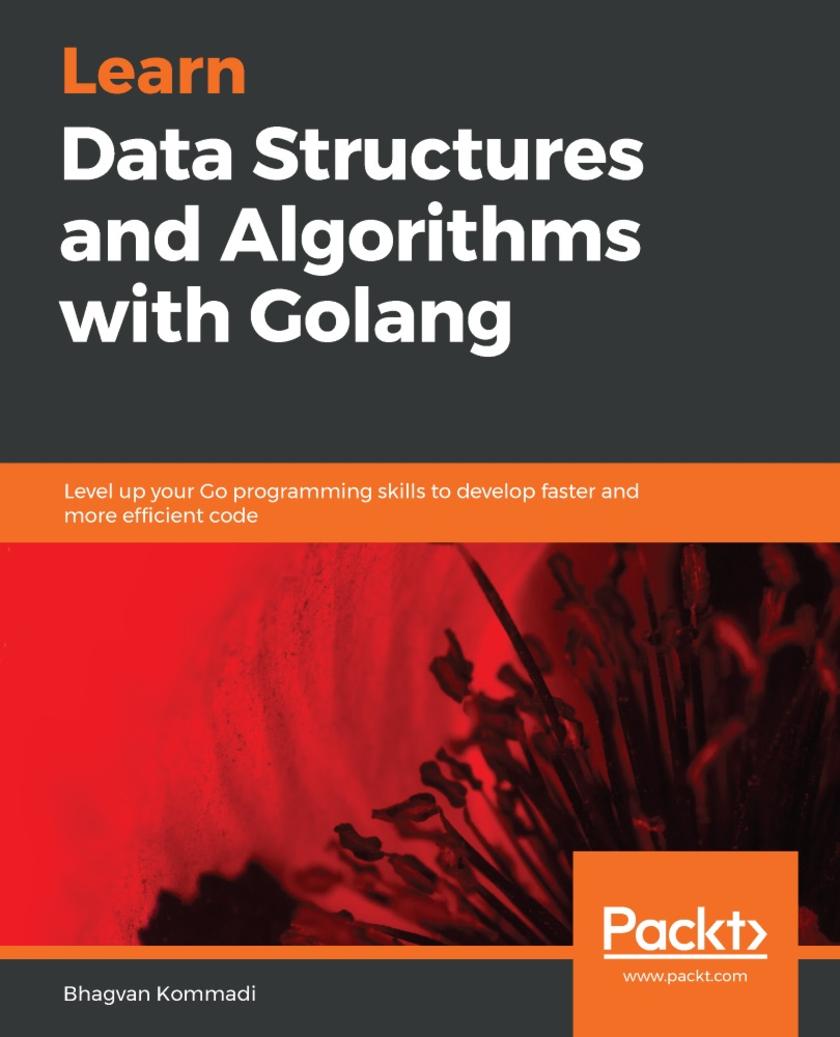
Learn Data Structures and Algorithms with Golang
¥73.02
Explore Golang's data structures and algorithms to design, implement, and analyze code in the professional setting Key Features * Learn the basics of data structures and algorithms and implement them efficiently * Use data structures such as arrays, stacks, trees, lists and graphs in real-world scenarios * Compare the complexity of different algorithms and data structures for improved code performance Book Description Golang is one of the fastest growing programming languages in the software industry. Its speed, simplicity, and reliability make it the perfect choice for building robust applications. This brings the need to have a solid foundation in data structures and algorithms with Go so as to build scalable applications. Complete with hands-on tutorials, this book will guide you in using the best data structures and algorithms for problem solving. The book begins with an introduction to Go data structures and algorithms. You'll learn how to store data using linked lists, arrays, stacks, and queues. Moving ahead, you'll discover how to implement sorting and searching algorithms, followed by binary search trees. This book will also help you improve the performance of your applications by stringing data types and implementing hash structures in algorithm design. Finally, you'll be able to apply traditional data structures to solve real-world problems. By the end of the book, you'll have become adept at implementing classic data structures and algorithms in Go, propelling you to become a confident Go programmer. What you will learn * Improve application performance using the most suitable data structure and algorithm * Explore the wide range of classic algorithms such as recursion and hashing algorithms * Work with algorithms such as garbage collection for efficient memory management * Analyze the cost and benefit trade-off to identify algorithms and data structures for problem solving * Explore techniques for writing pseudocode algorithm and ace whiteboard coding in interviews * Discover the pitfalls in selecting data structures and algorithms by predicting their speed and efficiency Who this book is for This book is for developers who want to understand how to select the best data structures and algorithms that will help solve coding problems. Basic Go programming experience will be an added advantage.
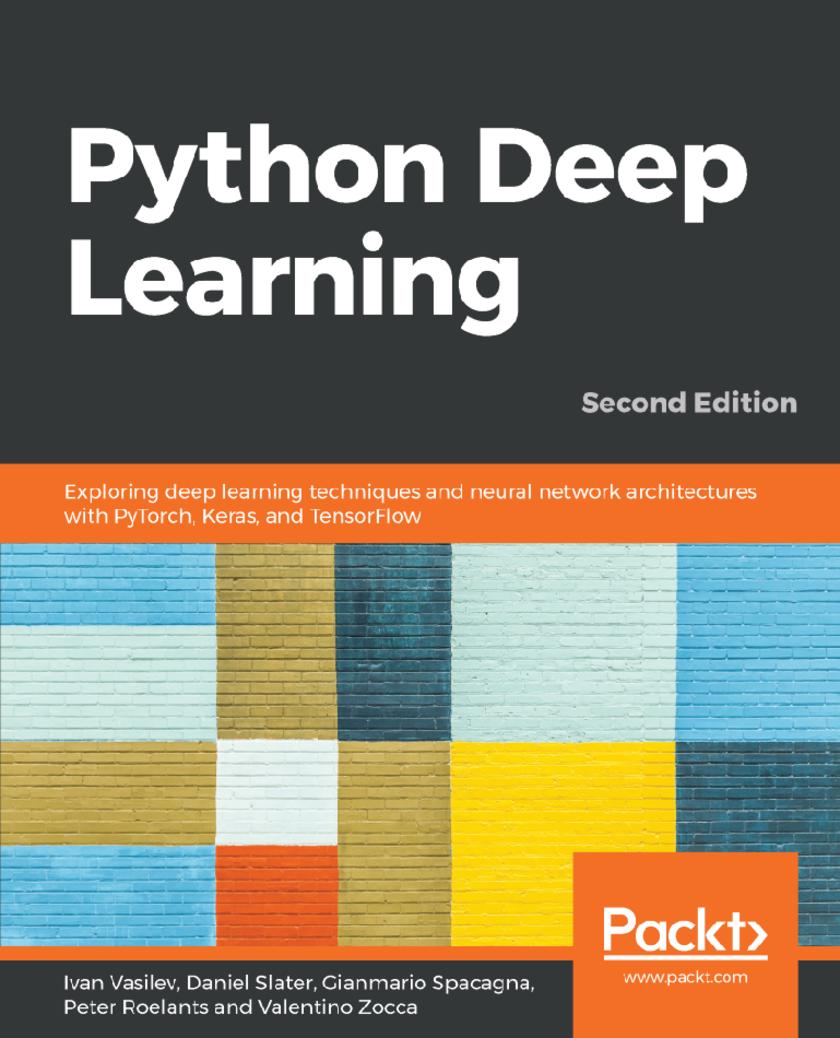
Python Deep Learning
¥71.93
Learn advanced state-of-the-art deep learning techniques and their applications using popular Python libraries Key Features *Build a strong foundation in neural networks and deep learning with Python libraries *Explore advanced deep learning techniques and their applications across computer vision and NLP *Learn how a computer can navigate in complex environments with reinforcement learning Book Description With the surge in artificial intelligence in applications catering to both business and consumer needs, deep learning is more important than ever for meeting current and future market demands. With this book, you’ll explore deep learning, and learn how to put machine learning to use in your projects. This second edition of Python Deep Learning will get you up to speed with deep learning, deep neural networks, and how to train them with high-performance algorithms and popular Python frameworks. You’ll uncover different neural network architectures, such as convolutional networks, recurrent neural networks, long short-term memory (LSTM) networks, and capsule networks. You’ll also learn how to solve problems in the fields of computer vision, natural language processing (NLP), and speech recognition. You'll study generative model approaches such as variational autoencoders and Generative Adversarial Networks (GANs) to generate images. As you delve into newly evolved areas of reinforcement learning, you’ll gain an understanding of state-of-the-art algorithms that are the main components behind popular games Go, Atari, and Dota. By the end of the book, you will be well-versed with the theory of deep learning along with its real-world applications. What you will learn *Grasp the mathematical theory behind neural networks and deep learning processes *Investigate and resolve computer vision challenges using convolutional networks and capsule networks *Solve generative tasks using variational autoencoders and Generative Adversarial Networks *Implement complex NLP tasks using recurrent networks (LSTM and GRU) and attention models *Explore reinforcement learning and understand how agents behave in a complex environment *Get up to date with applications of deep learning in autonomous vehicles Who this book is for This book is for data science practitioners, machine learning engineers, and those interested in deep learning who have a basic foundation in machine learning and some Python programming experience. A background in mathematics and conceptual understanding of calculus and statistics will help you gain maximum benefit from this book.

Serverless Integration Design Patterns with Azure
¥81.74
A practical guide that helps you progress to using modern integration methods and leverage new cloud capability models Key Features * Design critical hybrid integration solutions for your organization * Gain in-depth knowledge of how to build cloud-native integration solutions * Leverage cognitive services to build smart cloud solutions Book Description With more enterprises adapting cloud-based and API-based solutions, application integration has become more relevant and significant than ever before. Parallelly, Serverless Integration has gained popularity, as it helps agile organizations to build integration solutions quickly without having to worry about infrastructure costs. With Microsoft Azure’s serverless offerings, such as Logic Apps, Azure Functions, API Management, Azure Event Grid and Service Bus, organizations can build powerful, secure, and scalable integration solutions with ease. The primary objective of this book is to help you to understand various serverless offerings included within Azure Integration Services, taking you through the basics and industry practices and patterns. This book starts by explaining the concepts of services such as Azure Functions, Logic Apps, and Service Bus with hands-on examples and use cases. After getting to grips with the basics, you will be introduced to API Management and building B2B solutions using Logic Apps Enterprise Integration Pack. This book will help readers to understand building hybrid integration solutions and touches upon Microsoft Cognitive Services and leveraging them in modern integration solutions. Industry practices and patterns are brought to light at appropriate opportunities while explaining various concepts. What you will learn * Learn about the design principles of Microsoft Azure Serverless Integration * Get insights into Azure Functions, Logic Apps, Azure Event Grid and Service Bus * Secure and manage your integration endpoints using Azure API Management * Build advanced B2B solutions using Logic Apps, Enterprise Integration Pack * Monitor integration solutions using tools available on the market * Discover design patterns for hybrid integration Who this book is for Serverless Integration Design Patterns with Azure is for you if you are a solution architect or integration professional aiming to build complex cloud solutions for your organization. Developers looking to build next-level hybrid or cloud solutions will also find this book useful. Prior programming knowledge is necessary.
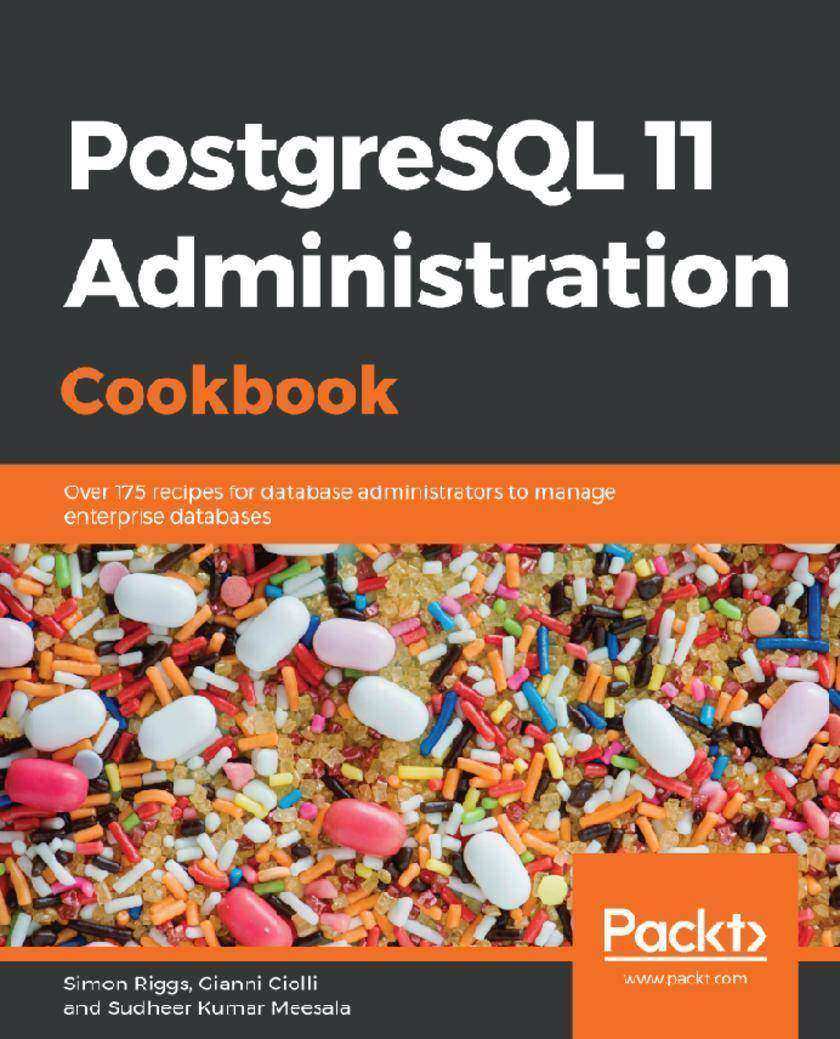
PostgreSQL 11 Administration Cookbook
¥79.56
A practical guide to administer, monitor and replicate your PostgreSQL 11 database Key Features * Study and apply the newly introduced features in PostgreSQL 11 * Tackle any problem in PostgreSQL 11 administration and management * Catch up on expert techniques for monitoring, fine-tuning, and securing your database Book Description PostgreSQL is a powerful, open source database management system with an enviable reputation for high performance and stability. With many new features in its arsenal, PostgreSQL 11 allows you to scale up your PostgreSQL infrastructure. This book takes a step-by-step, recipe-based approach to effective PostgreSQL administration. The book will introduce you to new features such as logical replication, native table partitioning, additional query parallelism, and much more to help you to understand and control, crash recovery and plan backups. You will learn how to tackle a variety of problems and pain points for any database administrator such as creating tables, managing views, improving performance, and securing your database. As you make steady progress, the book will draw attention to important topics such as monitoring roles, backup, and recovery of your PostgreSQL 11 database to help you understand roles and produce a summary of log files, ensuring high availability, concurrency, and replication. By the end of this book, you will have the necessary knowledge to manage your PostgreSQL 11 database efficiently. What you will learn * Troubleshoot open source PostgreSQL version 11 on various platforms * Deploy best practices for planning and designing live databases * Select and implement robust backup and recovery techniques in PostgreSQL 11 * Use pgAdmin or OmniDB to perform database administrator (DBA) tasks * Adopt efficient replication and high availability techniques in PostgreSQL * Improve the performance of your PostgreSQL solution Who this book is for This book is designed for database administrators, data architects, database developers, or anyone with an interest in planning and running live production databases using PostgreSQL 11. It is also ideal if you’re looking for hands-on solutions to any problem associated with PostgreSQL 11 administration. Some experience with handling PostgreSQL databases will be beneficial
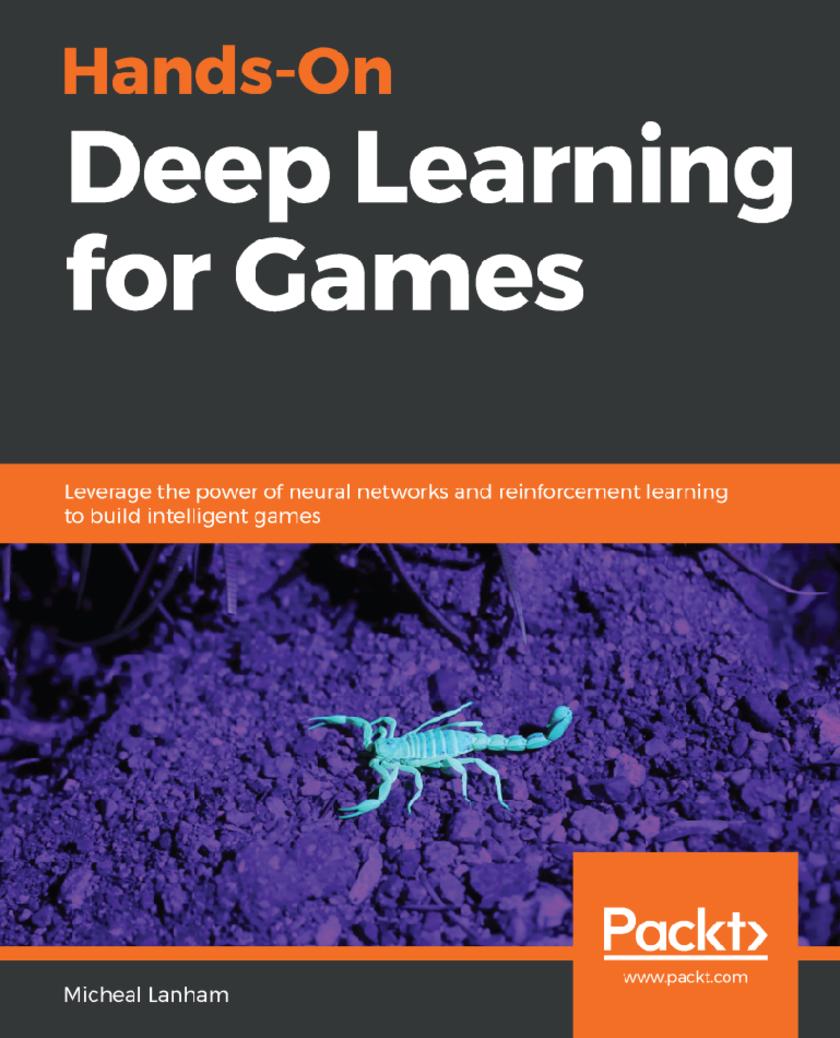
Hands-On Deep Learning for Games
¥73.02
Understand the core concepts of deep learning and deep reinforcement learning by applying them to develop games Key Features * Apply the power of deep learning to complex reasoning tasks by building a Game AI * Exploit the most recent developments in machine learning and AI for building smart games * Implement deep learning models and neural networks with Python Book Description The number of applications of deep learning and neural networks has multiplied in the last couple of years. Neural nets has enabled significant breakthroughs in everything from computer vision, voice generation, voice recognition and self-driving cars. Game development is also a key area where these techniques are being applied. This book will give an in depth view of the potential of deep learning and neural networks in game development. We will take a look at the foundations of multi-layer perceptron’s to using convolutional and recurrent networks. In applications from GANs that create music or textures to self-driving cars and chatbots. Then we introduce deep reinforcement learning through the multi-armed bandit problem and other OpenAI Gym environments. As we progress through the book we will gain insights about DRL techniques such as Motivated Reinforcement Learning with Curiosity and Curriculum Learning. We also take a closer look at deep reinforcement learning and in particular the Unity ML-Agents toolkit. By the end of the book, we will look at how to apply DRL and the ML-Agents toolkit to enhance, test and automate your games or simulations. Finally, we will cover your possible next steps and possible areas for future learning. What you will learn * Learn the foundations of neural networks and deep learning. * Use advanced neural network architectures in applications to create music, textures, self driving cars and chatbots. * Understand the basics of reinforcement and DRL and how to apply it to solve a variety of problems. * Working with Unity ML-Agents toolkit and how to install, setup and run the kit. * Understand core concepts of DRL and the differences between discrete and continuous action environments. * Use several advanced forms of learning in various scenarios from developing agents to testing games. Who this book is for This books is for game developers who wish to create highly interactive games by leveraging the power of machine and deep learning. No prior knowledge of machine learning, deep learning or neural networks is required this book will teach those concepts from scratch. A good understanding of Python is required.




 购物车
购物车 个人中心
个人中心



